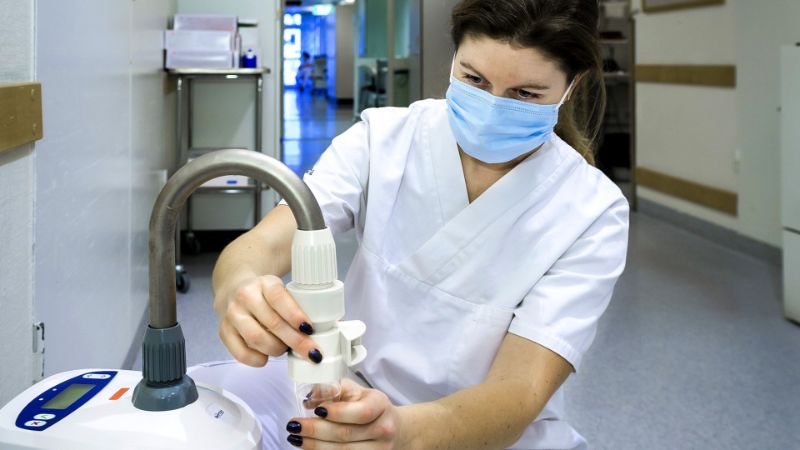In search of coronavirus
When the pandemic broke out, the aerosol researchers at LTH got a new virus to study. Work on winter vomiting virus, influenza and RS viruses was put on the back burner – now it was important to quickly get an overview of the airborne properties of the coronavirus.
Jessika Sellergren – Published 30 March 2022

Before the coronavirus outbreak, LTH’s research on airborne transmission was mainly about viruses such as calicivirus and influenza. But the arrival of the pandemic prompted aerosol researchers to concentrate more on the new virus. The researchers suspected that the coronavirus – like many other respiratory viruses – could also spread as aerosols and infect people when inhaled. But they didn’t know.
It’s been two years now – and the researchers know a lot more.
“What was a bit controversial at the beginning of the pandemic, but hardly anymore, is that the virus is actually in the air in sufficient quantities to spread the infection. We have been able to see this by detecting SARSCoV-2 in our air samples. In addition, this has been confirmed by many other research studies published during the pandemic,” according to Sara Thuresson, PhD student in Aerosol Technology at LTH.
Collected air samples at a hospital
In rooms with COVID-19 patients, Sara Thuresson and her research colleagues have collected three hundred air samples using a portable aerosol instrument. Each measurement collected 2,000 liters of air, the particles of which landed in a liquid sample that was then analyzed for viral content using PCR, a molecular biology method that can search for viruses.
“It was a disconcerting experience for me, not being trained in healthcare and not used to seeing people so sick. The newspaper articles about infection rates and deaths suddenly became very real. But it was a relief to spend time with the healthcare professionals who radiated security and optimism, and met everyday life with large doses of humor and kindness in spite of all the work,” says Sara Thuresson.
Measurements in patients’ rooms
On a typical measurement day, the researchers visited a couple of different departments at the hospital, including the Infection Clinic, to identify patients whose rooms they were able to measure. They then conducted two, ten-minute measurements with the aerosol instrument in each patient’s room.
The air samples showed that the coronavirus was in the air, but of the three hundred samples, only about ten percent contained the virus. Sara Thuresson believes that the samples would have shown different results if the measurements had been conducted in rooms with newly ill patients.
“Viral levels in COVID-19 patients have been shown to decrease gradually during the course of the disease, and many of the patients we measured had been ill for quite some time and thus probably had lower viral levels than if we had measured earlier,” says Sara Thuresson.
Many unanswered questions
“Our preliminary results show that the patient’s viral levels, the distance to the patient and ventilation all play a key role in the spread of the infection. On the other hand, there is no clear connection between the care procedures and the amount of virus in the air, such as in respiratory care,” according to Sara Thuresson.
Even though the results of the two years of pandemic research are now beginning to come to the fore, Sara Thuresson points out that there are still many unanswered questions.
“In the near future, we will focus on measuring coronavirus in the air during childbirth, as many mothers-to-be are currently sick with COVID. But in the future, we want to find out more about the survival of the virus in air, how to explain seasonal variation, and the importance of different routes of infection. And not only for covid, but for other viral diseases as well,” she says.
Research on airborne transmission
The research on airborne transmission that has been going on during the pandemic is beneficial for staff who care for patients with COVID-19, and can provide scientific support for guidelines on how to protect themselves from infection. The research is also important for increasing knowledge among the public in order to reduce the spread of infection in society.
The Aerosol Laboratory at LTH is currently being equipped with new climate chambers that, among other things, will enable studies on why many viruses spread more efficiently in winter.
The research is funded by AFA Insurance and FORMAS (Government Research Council for Sustainable Development), among others, and is being conducted in collaboration between LTH, the Clinic Infection Clinics in Lund and Malmö, and Clinical Virology at Lund University.

